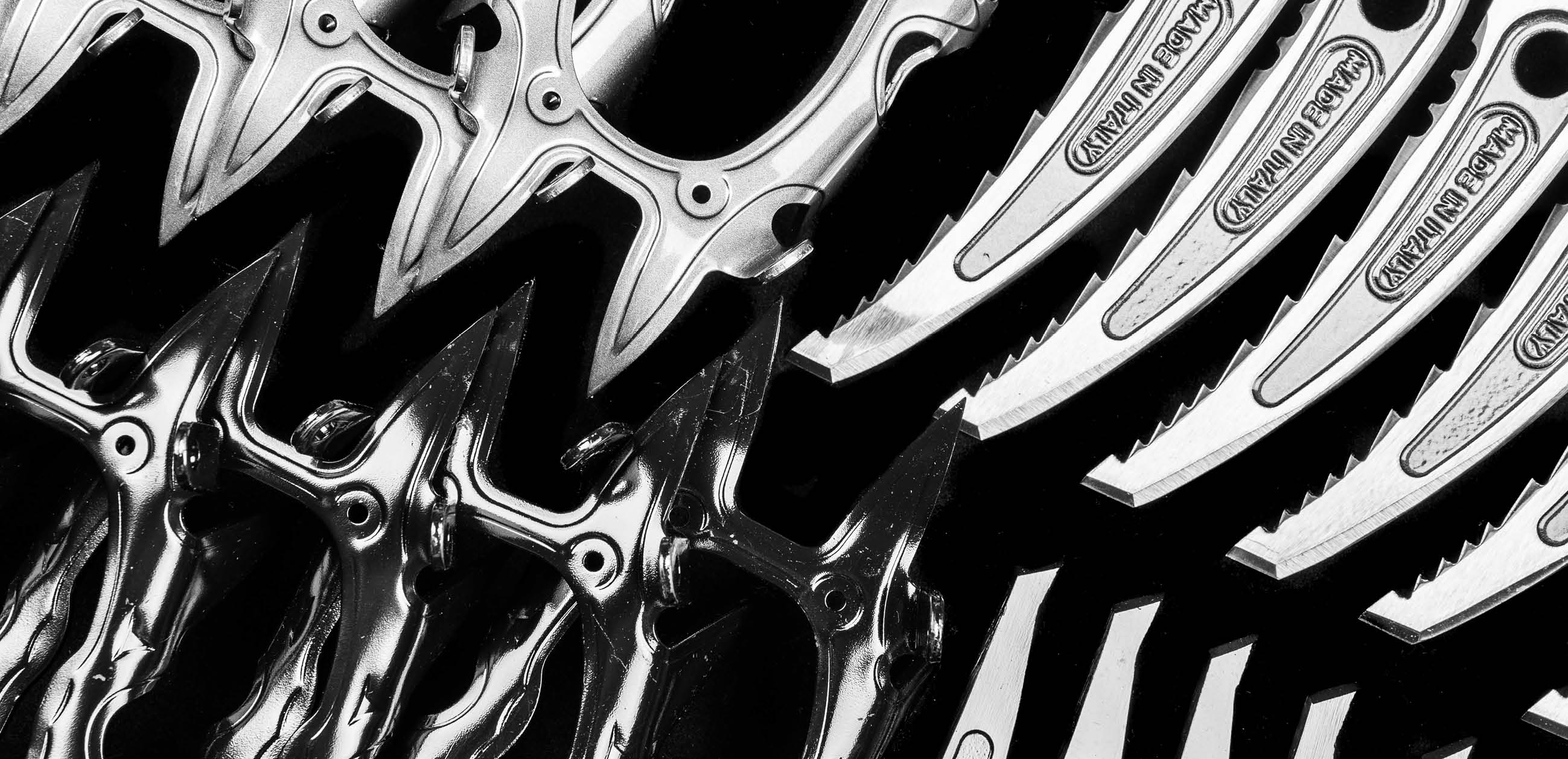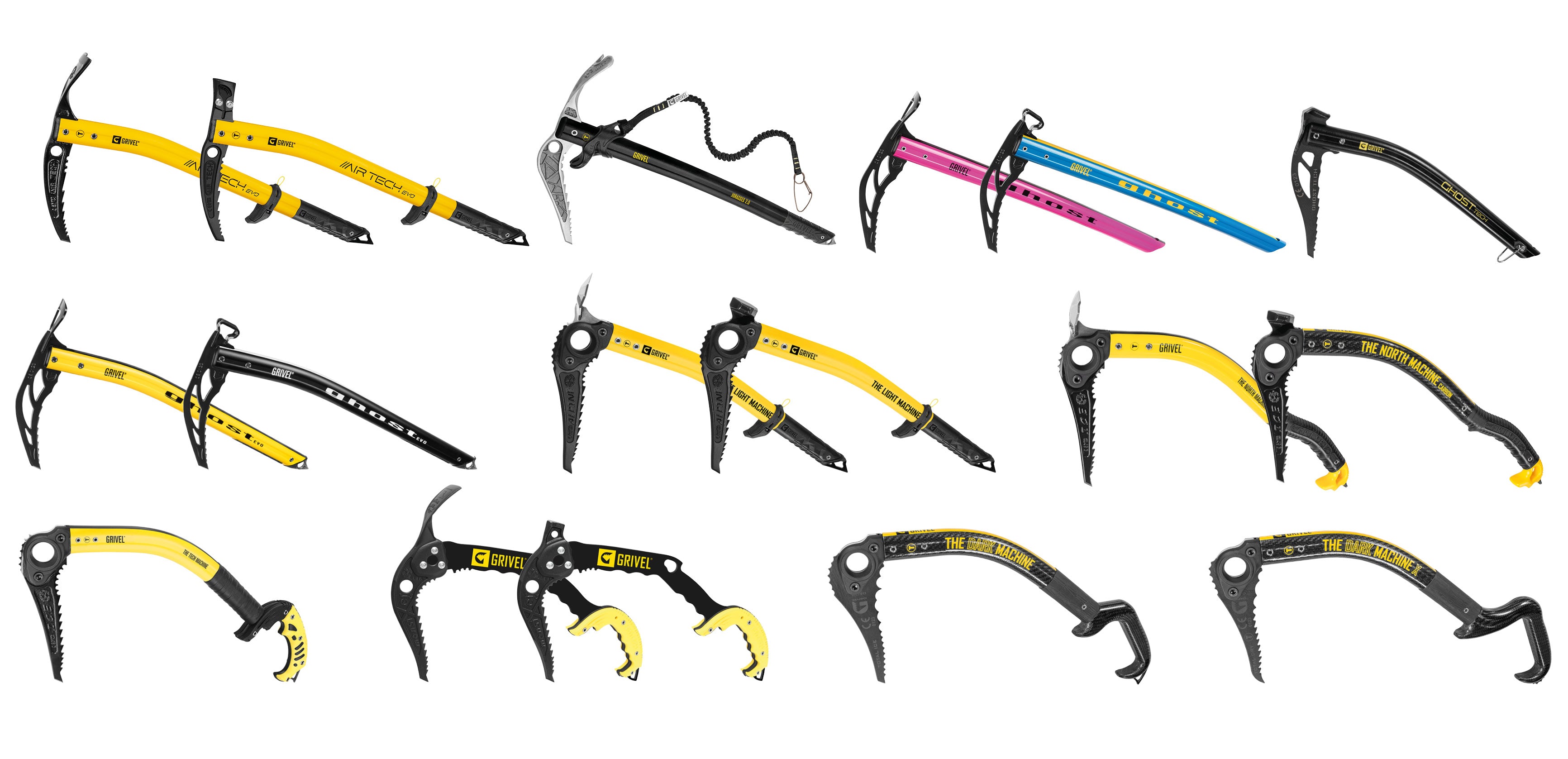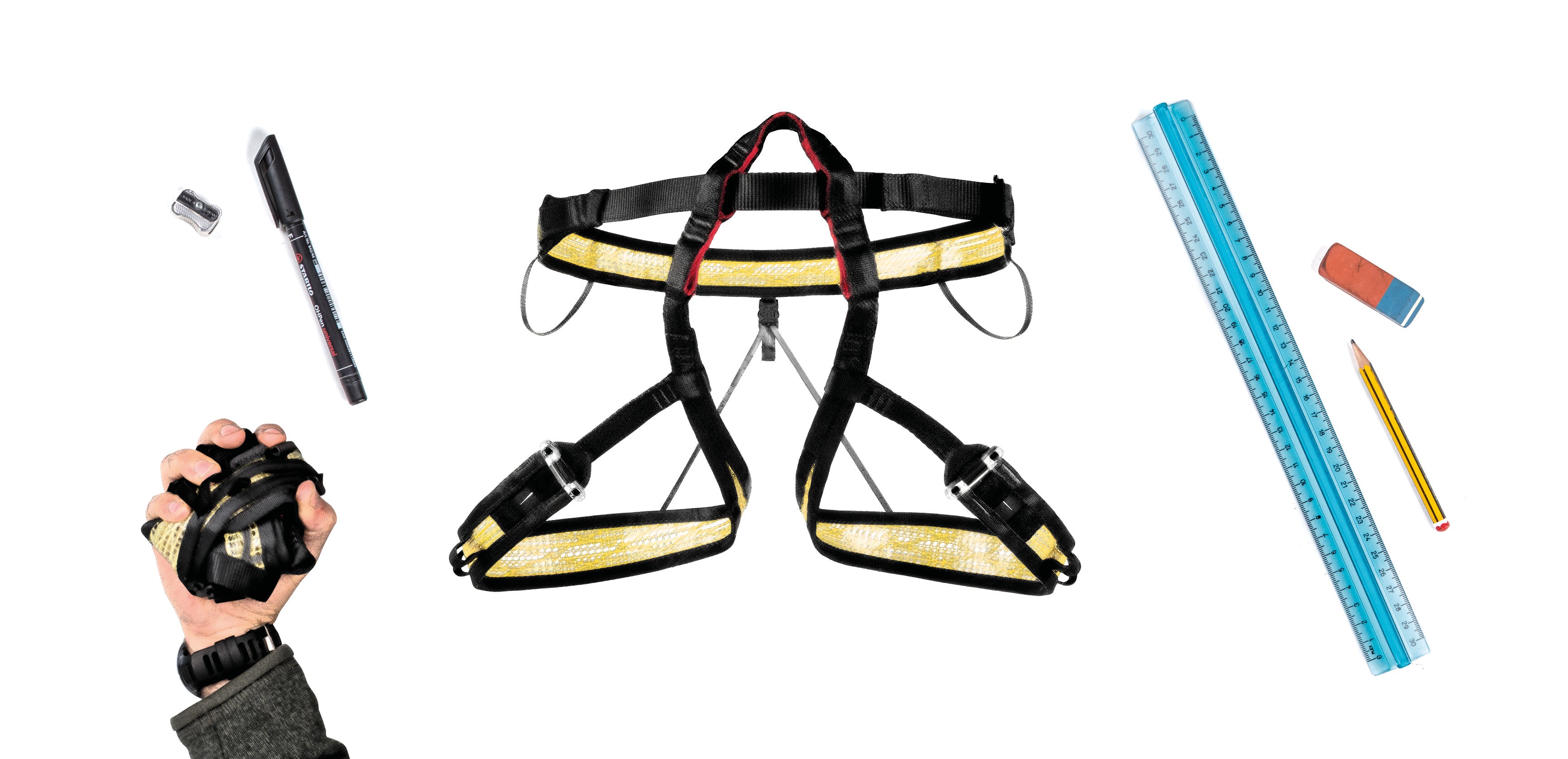
GRIVEL STEEL
Let's start from the beginning. First of all, what is steel? It is an alloy composed mainly of iron and carbon.
Our choice has always been to choose the best possible steel for our tools, both for ice axes and crampons. We have always wanted to create solid and reliable products, able to accompany our customers in the most difficult conditions.
We therefore use Nickel Chrome Molybdenum steel, developed for the aviation industry and also used in weapons and armor. Each delivery is accompanied by a certificate that guarantees its quality and composition. This steel brings a perfect compromise between mechanical strength and toughness.
Nickel increases toughness (which is the opposite of brittleness) and hardenability. Chromium also helps hardenability while Molybdenum makes it easier to work at high temperatures, and increases its resistance to fatigue at low temperatures.
Now let's see three insights, for those who want to continue reading:
- A brief history of steel
- A detailed analysis of Nickel-Chrome-Molybdenum steel
- An explanation of why we don't use stainless steels
1) A BRIEF HISTORY OF STEEL
The development of science and technology has been a constant ascent and each step rests the roots on the previously acquired results.
The importance of the discovery of metals is such that, to mark its history, man has resorted to a division based on their appearance. In fact, the age of stone followed the era of copper, then that of bronze and iron, a succession that contemplates some of the stages of one of the most fascinating technological adventures of man: metallurgy.
If a Marvel screenwriter wanted to write a story about the discovery of iron, it wouldn't take much to invent an incredible plot. But the reality itself, the "how it really went" is already superhero stuff.
Let's jump to 2000 BC. Ancient Egypt. We were not yet able to extract iron from minerals, there were no ovens hot enough to reach 1500 degrees, necessary to melt iron, the pyramid blocks were carved with softer copper utensils.


We had an entire planet to build and colonize and the steel we needed literally rained down from the sky inside the meteorites.
The impact of the cosmic material with the dense earth's atmosphere causes it to heat up, bringing some or all of the meteorite to a gaseous state, while the larger agglomerations fall to the ground, digging large craters.

In the ancient Egyptian language the hieroglyph for iron means "metal from heaven".
At the center of the crater it was therefore possible to find a cluster of this unknown material but with almost magical properties.

Once the ferrous material was recovered from the crater, it was worked by beating until it obtained the desired shape (Tutankamon dagger, gold and steel of meteoric origin).

To begin by swooping on a planet at fifty kilometers per second with a luminous mega-trail, a terrifying sound and creating a crater as big as a city could have been enough to guarantee some "rumors" between the materials, but the steel had hidden another property on the verge of magic: hardenability, which is the ability to change its characteristics based on the cooling rate.

Once heated, if it cools quickly, it assumes high mechanical characteristics, hardness above all, and under the microscope it looks like this:

On the other hand, if you let it cool slowly, you get better toughness and workability, under the microscope it looks like this:

The new ferrous material was much harder than what was used until then, it allowed to carve the stone without the need to be continually re-sharpened, it allowed to create more resistant blades and more effective tools. Being able to supply an army of swords with that material would have guaranteed easy victories, being able to produce bridges or buildings would have guaranteed indestructible structures, but being derived from meteorites was also terribly rare.
It was a taste, a sensational spoiler of what would have been the material of the twentieth century: the material of the skyscrapers, of the internal combustion engines that would then take us to the Moon, the material of surgical instruments and equipment for climbing on ice ... 4000 years after.

2) Nickel-Crome-Molibdenum steel
To understand in detail what the advantages of Ni Cr Mo steels are, we have to make a virtual visit to their atomic structure.
Steels are made of crystals, called grains, which, in turn, are formed by a lattice, to which each vertex is an atom.

Where the grid is homogeneous and perfectly organized, the sliding of the shelves is easier (ductile material)

Where the reticle shows anomalies (distortions) the sliding of the surfaces finds an obstacle (more resistant material)

There are 3 mechanisms to achieve this reinforcement of the crystal structure on steels:
strain hardening: by deforming the material when cold we produce an artificial distortion of the lattice causing the material to become harder but more fragile. The classic example is metal wire, if we twist it repeatedly it becomes more and more "hard" with each plastic deformation, until it breaks after a certain number of cycles.
Refinement of the grain: since the slippage of the lattice plants occurs mainly inside the grain, the smaller the grain, the elementary cell of the steel, the less the possibility of sliding the planes. The refinement of the grain is the most important of the 3 because it is able to simultaneously increase resistance and toughness.
Why then do we not only produce fine grain materials? There are limits to high temperatures, over 500 °, but if we talk about ice tools we can consider this case negligible.
Addition of alloying elements: alloying elements are introduced to the metal matrix, these elements deform the lattice, hindering its sliding.
In our case, Nickel Chromium and Molybdenum alloy elements are added as very precise percentages.
Molybdenum is added because it is a very large atom and therefore causes an important distortion of the lattice.
Molybdenum, however, has a strong affinity with Carbon, which is always present in every steel (a steel is by definition an alloy of Iron and Carbon) and tends to create Graphite. For this reason, Chromium is added in percentages equal to about 4 times that of Molybdenum, Chromium forms stable carbides, keeps the Carbon engaged and leaves Molybdenum free to do the job it is intended for, that is to deform the crystal lattice.
Nickel is then added, in quantities similar to those of Chromium, to increase toughness (toughness is the opposite of fragility)
Nickel reduces the effects of the hardening to which our steel is subjected and makes it stable up to low temperatures.
in this case the steel is designated with the abbreviation 39NiCrMo4, which means:
0.39% Carbon steel (% of carbon is multiplied by 100), 1% of Nickel (% multiplied by 4), 0.8% of Chromium and 0.2% of Molybdenum (chromium is multiplied with factor 4 and molybdenum with factor 10 but if the percentages are below 1% they are not indicated numerically).
3) Nickel-Chrome-Molybdenum steel vs Stainless steel.
Why do we use Ni-Cro-Mo steel and don't use stainless steel?
Basically for two reasons:
1) Nickel-Chrome-Molybdenum steel keeps the sharpening better because it has greater hardness. In fact, no high-quality knife is made of stainless steel. Same goes for the ski edges. The tools in Nickel-Chrome-Molybdenum steel are thus better sharpened and remain sharpened longer.
2) the processing of (martensitic) stainless steel carries risks of micro cracks in the material, difficult to identify in the production process and dangerous because they can lead to the breakage of the piece with use.
Note that there are no differences in weight between the two types of steel (we are under 1% variations). Virtually no difference even in the behavior at low temperatures.


